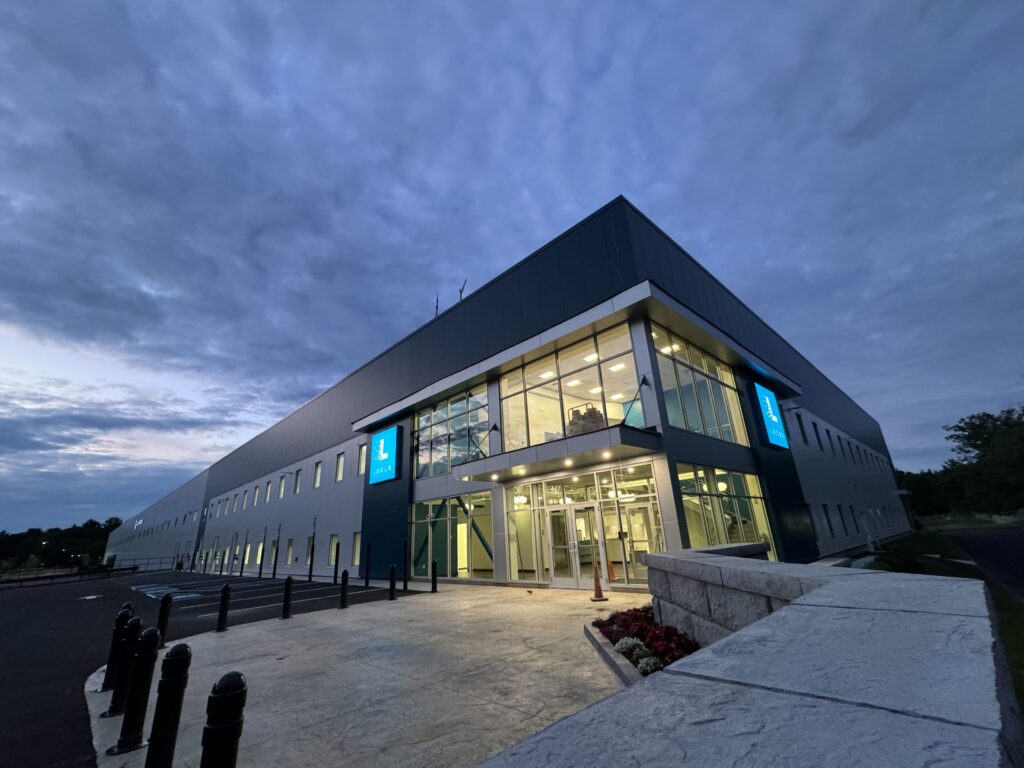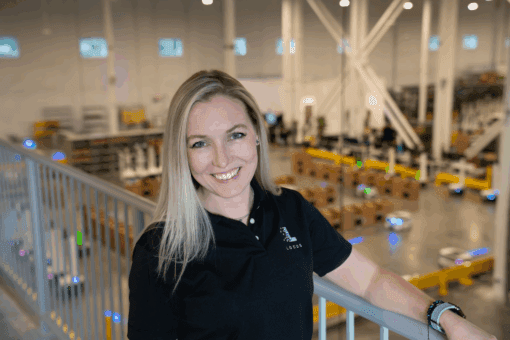WP: How to achieve 400 UPH with Locus Fast Pick
WP: How to achieve 400 UPH with Locus Fast Pick Download Now!
Celebrating Nine Years at Locus: Reflections and Vision for the Future of Warehouse Automation
Rick Faulk, Chief Executive Officer

Nine years ago this month, I embarked on an exciting journey as CEO of Locus Robotics. What started as a visionary idea from our founders has flourished thanks to our exceptional customers and dedicated employees, whose contributions have propelled Locus into one of the world’s largest automation providers for warehousing and logistics.
Reflecting on this milestone, I'm reminded of my conversations with other CEOs in the robotics industry who often express frustration about being trapped in endless pilots and struggling to achieve meaningful traction.
At Locus, we faced similar challenges early on, but we navigated them successfully through focused strategies and disciplined execution. I want to highlight some of these ideas as best practices for early-stage robotics businesses aiming to scale.
Additionally, I’ll share my perspective on the transformative changes I foresee shaping our industry.
Looking Back: Nine Guiding Strategies and Principles
As I look back on our nine-year journey, nine key strategies and principles have consistently guided Locus in driving growth, creating customer value, and navigating the unique challenges of scaling a robotics business:
1. Solving a Big Problem in a Very Large Market: At Locus, we decided to tackle the significant challenges of warehouse automation, particularly labor shortages involved in picking and replenishment in the fast-growing online commerce sector. Over the years, we have remained focused on this singular problem. This focus has been instrumental to our success.
2. Producing a Measurable ROI for Customers: Customer value drives adoption. Locus solutions deliver clear, quantifiable ROI by significantly improving picking rates, reducing error rates, and optimizing labor costs. Demonstrable ROI makes our technology indispensable to our customers.
3. Pricing for Simplicity and Transparency: We've maintained a straightforward Robots-as-a-Service (RaaS) pricing model that includes robots, software, and the Locus team, with no confusing add-ons. Customers easily grasp the value they're receiving, which simplifies their decision-making process.
4. Defining & Driving Innovation: True innovation is about creating solutions that scale efficiently. Tim Tetzlaff, Global Head of Digital Transformation at DHL, perfectly captured how I think about innovation in the robotics space: "Innovation is only real when scaled. Otherwise, it's just a nice idea." This resonates with me as I see many robotics companies with compelling ideas struggle to scale effectively, missing the chance to create meaningful customer impact and shareholder value. At Locus, our strategy early on was to offer configurable rather than customized solutions, enabling rapid deployment and broad applicability across diverse customer needs.
5. Viewing Engagements as Relationships, not Transactions: Every interaction with our customers at Locus is viewed through the lens of a long-term relationship. Decisions, big or small, prioritize customer success and satisfaction, building enduring partnerships rather than transactional engagements. With our customer-centric culture, every Locus employee is empowered to prioritize the customer in every decision they make.
6. Asking What Would Sally Say? We frequently ask, "What would Sally Miller, Global CIO at DHL Supply Chain, say about this decision?" This customer-centric approach ensures that our product and business decisions consistently meet the real-world needs of our customers.
7. Establishing Lighthouse Customers: Early in our journey, we strategically partnered with industry leaders and "lighthouse" customers such as DHL, GEODIS, Adidas, Cardinal Health, UPS, Ryder, and Walgreens Boots Alliance, whose adoption of Locus solutions enhanced our credibility and visibility within the market.
8. Raising Sufficient Capital: We know from years of experience that it always takes more capital and more time than anticipated, and raising it at the right time is critical to minimize dilution. More than double the money and double the time is the norm. Ensuring we were well-funded allowed us to innovate, scale rapidly, and confidently weather industry fluctuations.
9. Hiring Exceptional Talent & Leadership Who Can Scale: The success of Locus is rooted in our exceptional leadership team and amazing employees. Our nearly 500 employees blend deep functional expertise with industry insights and a keen understanding of customer problems. As we continue to scale, each department leader has adapted their strategies and fostered innovation.
Looking Ahead: The Next Nine Years
Looking ahead to the next nine years in warehouse automation, I foresee nine transformative shifts driven by advancements in AI, evolving customer demands, and industry dynamics that will shape how warehouses operate, compete, and innovate:
1. Increased Pace of Automation & Demand for Proven ROI: The pace of automation adoption will accelerate dramatically, as companies that lag behind in automating their operations will face significant competitive disadvantages. We estimate that less than 10% of warehouses globally have sufficient levels of automation today. Customers will increasingly scrutinize automation investments, demanding even more precise and demonstrable ROI. Automation providers who transparently showcase their clear value, reinforced with referenceable customers, will thrive.
2. Fully Autonomous (Lights-out) Warehouses: While total "lights-out" facilities may not dominate within the next nine years, significant portions of warehouse operations will operate autonomously. Solutions like Locus Array will lead this transition, reducing the dependency on human intervention to nearly zero, which will address what we expect to be worsening labor shortages and rising costs of labor.
3. Next Level Performance Through Advances in AI: Physical, Agentic, & Explainable: Physical AI, capable of interacting dynamically in the real world; Agentic AI, which autonomously manages complex tasks; and Explainable AI, offering transparency into decisions, will significantly enhance customer value and operational effectiveness. AI-driven automation will predict, plan, and adapt workflows in real-time, allowing warehouses to respond rapidly to market changes, inventory fluctuations, and customer demands. Warehouse-specific foundational AI models will emerge to reduce customization time and accelerate deployments. These models will standardize complex decision-making tasks, such as route planning, inventory management, and demand forecasting.
4. Flexible Automation as Standard: Customers will insist on highly adaptable and flexible automation solutions capable of rapidly evolving with changing demands. Rigid, single-use systems will become obsolete, replaced by multi-functional, easily reconfigurable automation solutions.
5. Consolidation of Automation Vendors: The automation market is expected to undergo significant consolidation. Leading vendors will merge to provide comprehensive, integrated automation solutions, simplifying procurement, integration, and support for customers.
6. Integration & Interoperability: Automation platforms will increasingly embrace interoperability, seamlessly integrating multiple technologies (AMRs, robotic arms, conveyors, drones, and IoT sensors). Warehouses will become cohesive ecosystems rather than disconnected islands of automation.
7. Robots-as-a-Service (RaaS) Dominance: The adoption of flexible financial models such as RaaS will become mainstream, enabling warehouses to scale rapidly, mitigate risk, and access advanced technologies without heavy upfront investments. Providers will continuously update their solutions, ensuring that warehouses always have access to cutting-edge technology.
8. Digital Twins & Predictive Simulation: Digital twins, high-fidelity virtual replicas of physical warehouses, will be standard tools for planning, optimization, training, and predicting future scenarios, reducing deployment risks and enabling continuous operational refinement.
9. Worker Upskilling & Automation Literacy: As automation becomes more ubiquitous, significant investment will be required to reskill and upskill workers. Companies will proactively equip their teams with automation literacy to maximize collaboration with robotics and AI systems.
Reflecting on nine remarkable years, I'm deeply grateful to the incredible Locus team, our visionary customers, and our supportive investors and partners who have contributed to our journey.
As we look forward to the next chapter, I'm incredibly excited about the future, the challenges we will solve, and the extraordinary opportunities that lie ahead.
About the Author
Rick leads the executive team with over 30 years of experience in executive management, sales, and marketing for some of the world’s most successful technology companies, such as Cisco, Intronis, j2 Global, WebEx, Intranets.com, Barracuda Networks, Lotus Development, Mzinga, and PictureTel. Rick leads the executive team and is responsible for the overall strategy and execution at Locus Robotics. Rick currently sits on various boards and is an advisor to multiple companies, including Retrocausal, Arccos, Cybernetix Ventures, and Leading Edge Ventures. Past board positions include Yodle, Virtual Computer, Bidding for Good, Skill Survey, Influitive, Ntirety, Blue Raven, and Centive.




